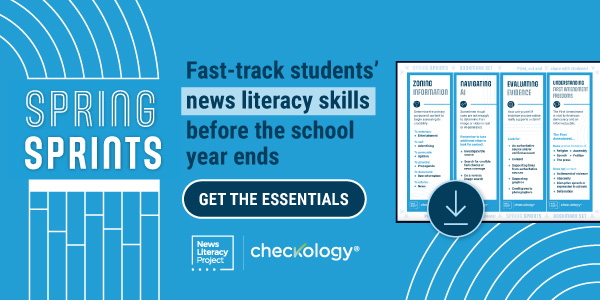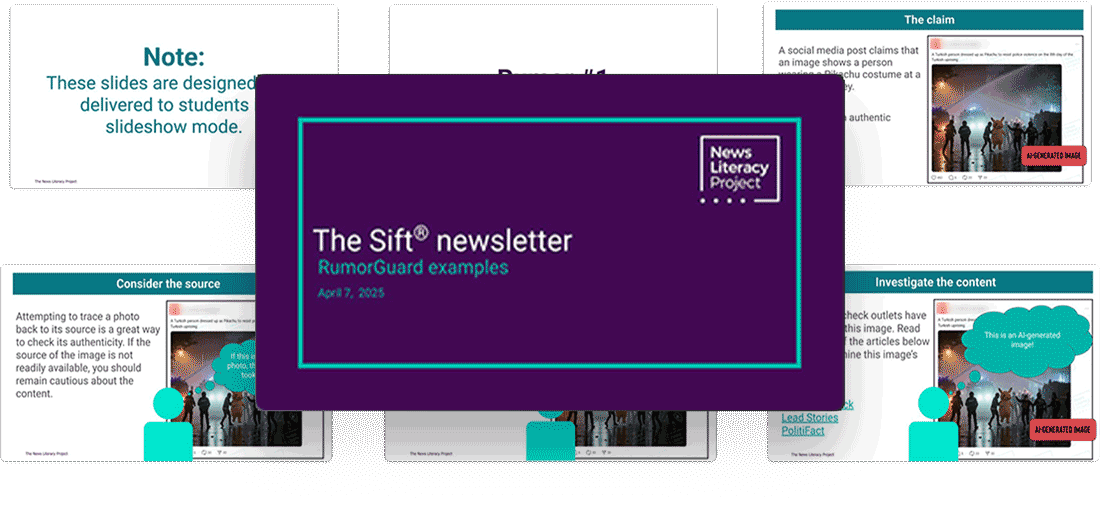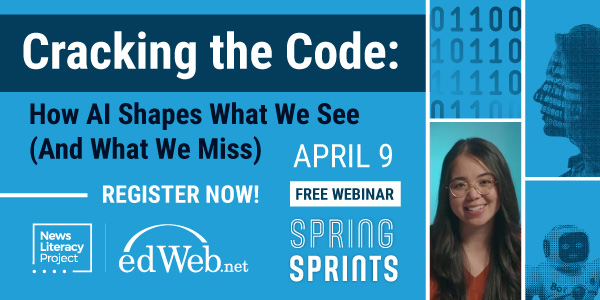The Sift: Dangerous memes | AI Pikachu
|
Hi Sift reader, Interested in a $50 Amazon gift card? Take our annual Sift reader survey and enter the drawing at the end of the survey for a chance to win one of four gift cards. 😊 We’d like to know more about your experience with The Sift to help make the newsletter as helpful as possible to your teaching. Please take just a few minutes to answer these questions. Thank you in advance! —The Sift team |
In this issue
Dangerous memes | AI Pikachu | RumorGuard slides | Daily Do Now slides
 Daily Do Now slidesDon't miss this week's classroom-ready resource.  |
Top picks
Educator, here are the latest news literacy topics and tips on how to integrate them into your classroom.


| Online memes can be funny, but they can also be used to spread misinformation. |
1. Dangerous ideas shared as jokes
Internet memes are funny and simple — an image and some words — but that simplicity also makes it easier for their creators to spread false or misleading information. This article gives tips for helping curb misinformation and conspiracy theories, such as:
- Thinking about any hidden messages in the meme.
- Considering if there’s an extreme or conspiratorial community behind the message.
- Considering the context.
- Thinking about the harm a meme could cause before sharing.
| Discuss: |
How can memes spread conspiracy theories and other dangerous ideas? How can memes distort our perceptions of reality, even if we primarily think of them as “just jokes”? How does humor help cloak misinformation? Why does context matter when evaluating a meme? What ideas do you have for combating meme-driven misinformation?
★ NLP Resources:
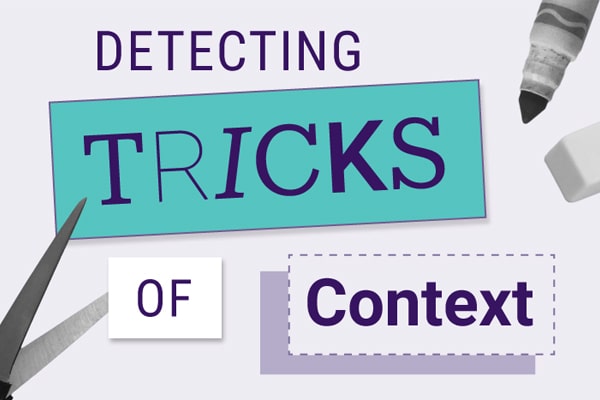

Infographic: “Detecting tricks of context”
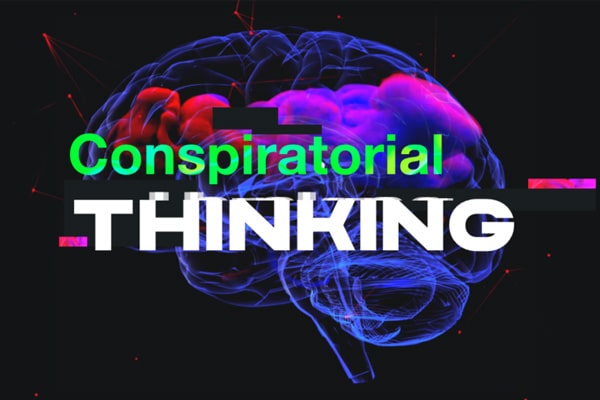

“Conspiratorial Thinking” (Checkology virtual classroom)
| Related: |
2. Student inspires AI deepfake legislation
New Jersey has a new law that criminalizes those who share artificial intelligence deepfakes with the intent to harass or extort someone, joining a growing number of states enacting deepfake regulations. The inspiration behind the law was Francesca Mani, a high school student targeted by a classmate who created sexually explicit deepfake videos featuring her likeness. Under the new law, this type of harassment can now result in a fine or prison time.
| Discuss: |
Should generative AI technology be regulated by the government? If not, why not? If so, how? What effect can AI deepfakes have on civic life and on American democracy? How are AI deepfakes harmful in certain situations?
| Idea: |
Share this four-minute video and article from FactCheck.org about countering misinformation and identifying AI-generated images. What signs indicate an image, audio or video is AI-generated? Outside of visual and audio clues, what skills can help you determine fabricated AI content from authentic photos, audio and video?
★ NLP Resources:


“Introduction to Algorithms” (Checkology virtual classroom)
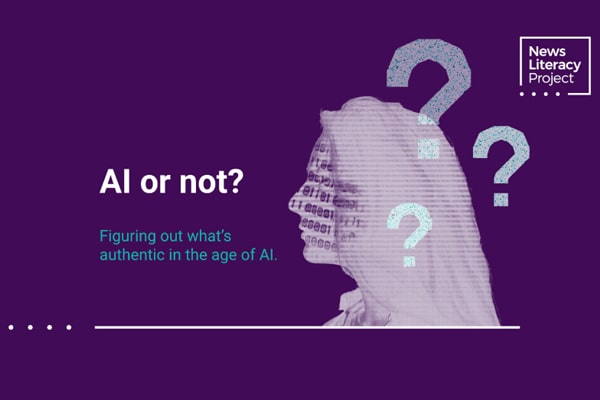

Lesson: “AI or not?”
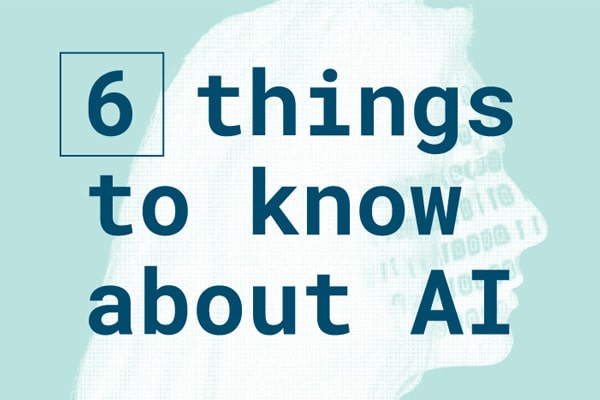

Infographic: “6 things to know about AI”
| Related: |
- Opinion: “Generative AI has accelerated the creation of sexually explicit deepfakes. What can be done?” (North Dakota Monitor).
3. PBS and NPR may lose government funding
There’s a move to cut federal government funding to public broadcasters NPR and PBS. While the government provides a small slice of their funding — 1% of NPR’s budget and 15% of PBS’s budget — many local stations get most of this money. The loss of funding could mean smaller stations might close or listeners could lose local news coverage that’s critical in some areas. For example, during floods in Kentucky, when cell service was down and residents lacked power, an NPR member station broadcasted vital information on getting fresh water and dealing with the Federal Emergency Management Agency.
Some conservative lawmakers say NPR and PBS programming is politically biased. NPR says it produces journalism that’s essential to democracy, and PBS says its programs help children learn reading and math skills.
| Discuss: |
Are publicly funded radio and televisions stations a good idea? Why or why not? What standards do news organizations – including NPR News and PBS NewsHour – adopt to protect their editorial independence?
| Idea: |
Have students use this Dig Deeper think sheet from 2023 to analyze practices used by news organizations to maintain editorial independence, regardless of funding.
★ NLP Resources:
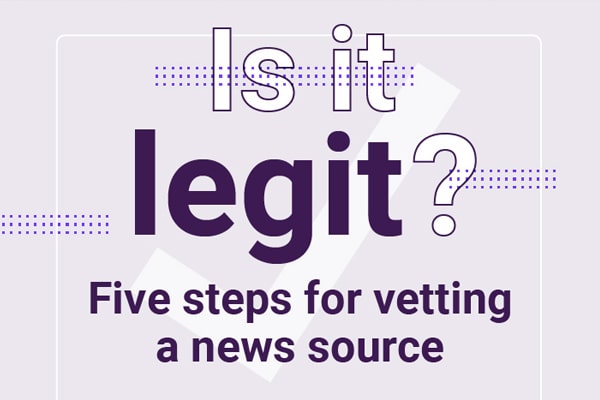

Infographic: “Is it legit? Five steps for vetting a news source”
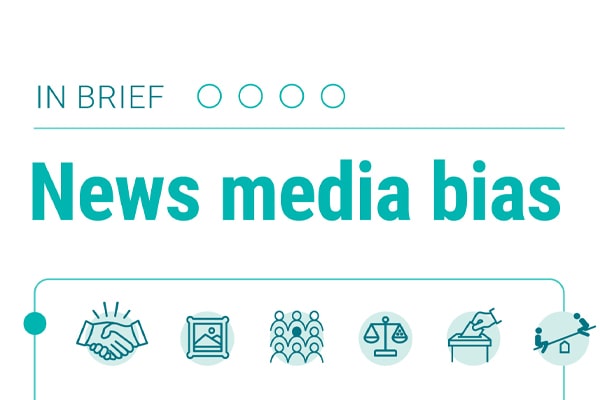

Infographic: “In brief: News media bias”
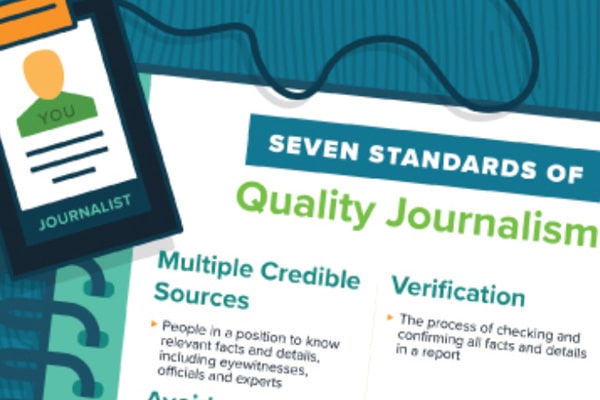

Infographic: “Seven standards of quality journalism”
| Related: |
- “Americans more likely to support than oppose continuing federal funding for NPR and PBS” (Pew Research Center).


★ Featured classroom resource:
|
Viral image of Pikachu at protest is AI-generated
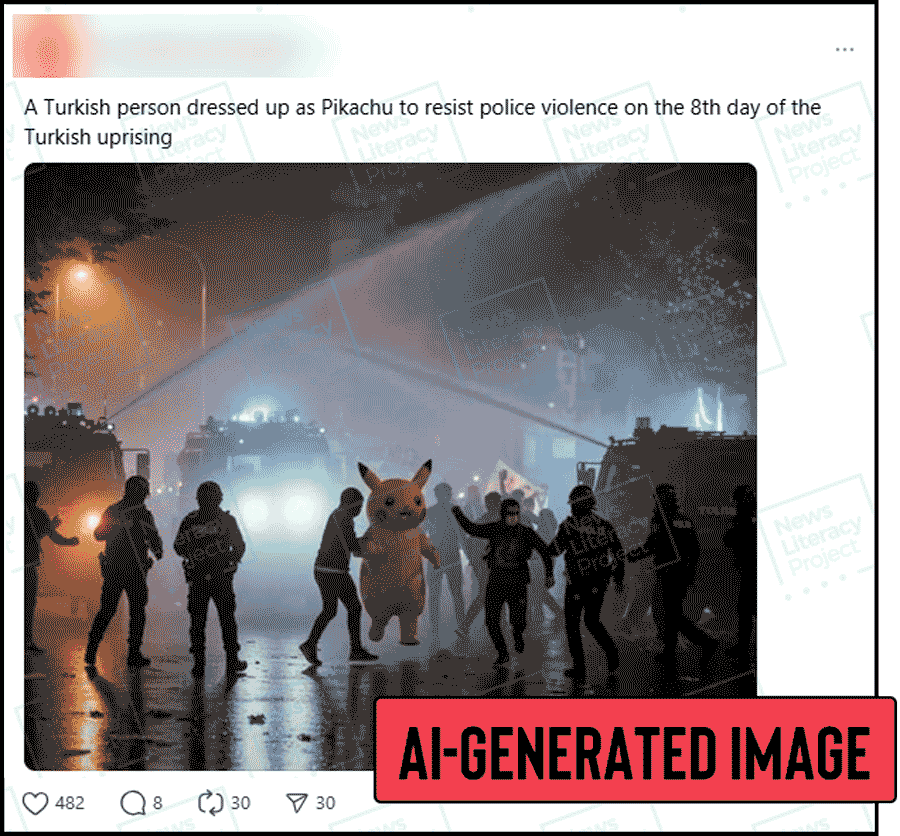

❌ NO: This is not a genuine photograph of a person in a Pikachu costume at a protest in Turkey last month.
✅ YES: This image was created with artificial intelligence tools.
✅ YES: Fabricated images of protesters dressed as Pikachu, Batman, the Joker and other fictional characters were created after genuine footage showed a real person in a Pikachu costume running with the crowd at the protest.
★ NewsLit takeaway
Breaking news events are often exploited by social media users aiming to generate clicks and views with sensational content. These viral posts hedge close to the truth – there really was a person in a Pikachu costume at this protest in Turkey – which makes them difficult to spot. Here are a few questions to ask when encountering these posts:
Who took the photograph? Tracing a photograph back to its source is a great way to check its authenticity. If the source of the image is not readily available, there’s reason to be cautious about the content.
Who shared the image? Many social media accounts are more focused on generating views than they are in spreading factual information. Taking a few seconds to analyze the account that posted the image can often reveal important context.
Are there any signs of manipulation? Images and videos created with AI tools are increasingly realistic, but they still aren’t perfect. Look for misspellings or jumbled letters as AI image generators still have a difficult time rendering text.
No, Trump didn’t make a social media announcement ending dual citizenship


❌ NO: This is not a genuine post from President Donald Trump’s Truth Social account.
✅ YES: This is a piece of impostor content.
✅ YES: This post began to circulate on April 1, April Fool’s Day.
★ NewsLit takeaway
Fake social media posts are a common form of misinformation online. Here are a few tips to spot these fabrications:
Beware of supposed screenshots. If a social media post is circulating in the form of an image (without a hyperlink) it may be cause for suspicion.
Check the original source: Take a moment to check the apparent source of the content. In this case, a review of Trump’s Truth Social feed reveals no record of this alleged post.
Review news reports: If you don’t have access to a claim’s original source (for instance, no Truth Social account), look for any coverage from credible news outlets. A lack of headlines and stories is a sign that the content is fake.


| Do hippos swim in water or outer space? A four-year-old would instinctively fact-check that for you! Researchers found that kids as young as four can start to recognize misinformation. In fact, in Finland media literacy begins in preschool. | |
| Uncovering waste, fraud and abuse in government is a slow, complex process full of intricacies and dead ends. Something investigative journalists know all too well. | |
| Do you believe a free press is a vital part of American democracy? If so, Poynter’s list of ways to support press freedoms is for you! First on the list: subscribing to newsletters that cover press freedom issues (like the one you’re currently reading😉). | |
| Touching fentanyl won’t result in an overdose, but a viral falsehood claiming that it can do so has not only resulted in fear, but also in policy changes. | |
| Ordinary people can do extraordinary things. Just look to the 60 citizen journalists in Nebraska documenting local government meetings and events to share with news editors for publication — providing essential updates in rural and urban news deserts. | |
| Looking to teach a little history with your news literacy? Then check out this profile of Marvel Cooke, a pioneering Black American journalist who became the first female reporter at the Black-owned New York Amsterdam News in 1928. | |
| The U.S. has over 690 Asian American and Pacific Islander news outlets in 56 languages, but news publishers say they face mounting threats to safety and press freedom. | |
| Student journalists are telling powerful stories about the impact of federal policies on their communities. In Arkansas, for example, students reported on how the gutting of the U.S. Agency for International Development affected local rice farmers who supplied crops for the agency. | |
| Hawaii’s oldest newspaper is back, in a way. The short-lived Ka Lama Hawaiʻi, which published from 1834 to 1841, is now the name of a new high school newspaper. Student reporters say the paper helps them learn media literacy and gives their peers a voice. |
Thanks for reading!
Your weekly issue of The Sift is created by Susan Minichiello (@susanmini.bsky.social), Dan Evon (@danieljevon), Peter Adams (@peteradams.bsky.social), Hannah Covington (@hannahcov.bsky.social) and Pamela Brunskill (@PamelaBrunskill). It is edited by Mary Kane (@mk6325.bsky.social) and Lourdes Venard (@lourdesvenard.bsky.social).
You’ll find teachable moments from our previous issues in the archives. Send your suggestions and success stories to [email protected].
Subscribe to this newsletterSign up to receive NLP Connections (news about our work) or update your subscription preferences here. |


Check out NLP's Checkology virtual classroom, where students learn how to navigate today’s information landscape by developing news literacy skills.


